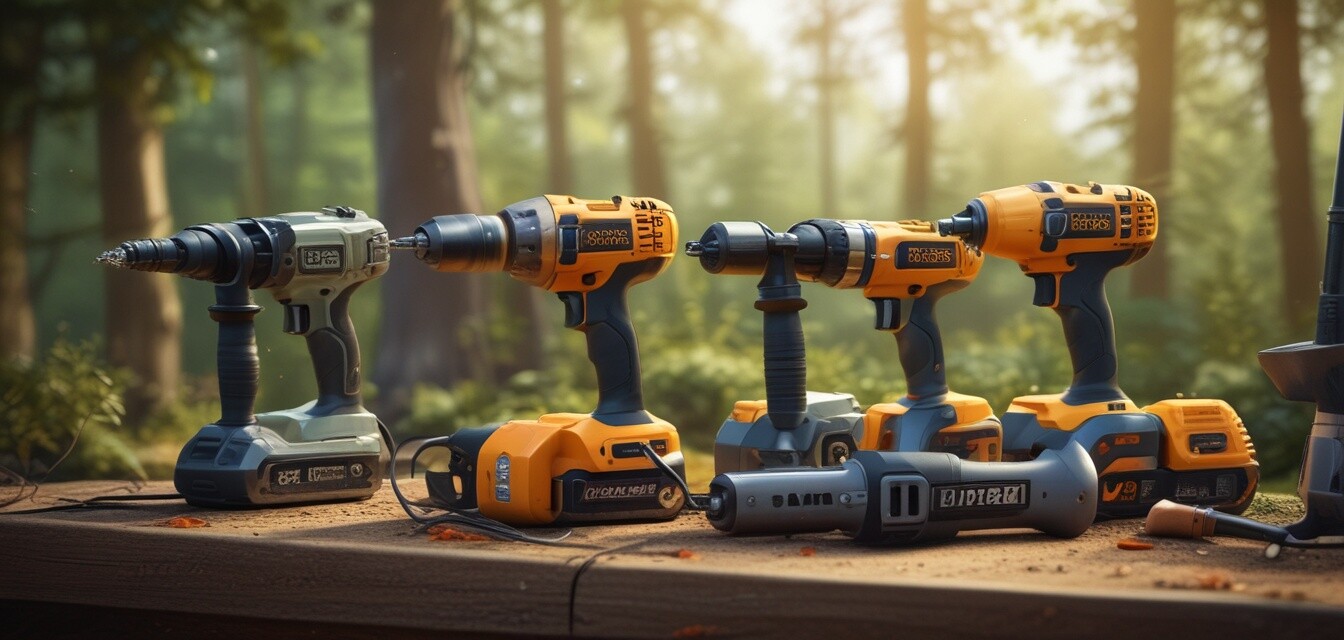
The environmental impact of electric power tools
Key Takeaways
- Electric power tools can help reduce carbon footprints when compared to gas-powered tools.
- Manufacturers are moving towards sustainable practices to minimize environmental impact.
- Proper disposal and recycling of electric tools are essential for reducing e-waste.
- Consumers play a crucial role by choosing eco-friendly options and brands.
The rise of electric power tools has revolutionized the construction and DIY landscape. As more contractors and DIY enthusiasts adopt these tools, it's crucial to assess their environmental impact. This article explores the sustainability aspects of electric power tools and highlights the efforts of manufacturers to create eco-friendly solutions.
Understanding the environmental impact
The environmental impact of electric power tools encompasses several factors, including energy consumption, production processes, and waste management. Electric tools typically produce lower emissions compared to gasoline-powered counterparts. However, their production and disposal present unique challenges.
| Factor | Gas-Powered Tools | Electric Power Tools |
|---|---|---|
| Carbon Emissions | High due to fuel combustion | Low if powered by renewable energy |
| Energy Efficiency | Generally lower efficiency | Higher efficiency, especially with advancements |
| Noise Pollution | Typically louder | Often quieter |
| Maintenance | Regular maintenance required | Less frequent maintenance needed |
Sustainable manufacturing practices
Many manufacturers in the power tools industry are adopting sustainable practices. This shift is essential for reducing the overall environmental footprint linked to production. Techniques include:
- Using recycled materials in tool production
- Implementing energy-efficient manufacturing processes
- Ensuring better product longevity through design
- Encouraging eco-friendly product packaging
Emerging technologies
Advancements in battery technology are particularly notable in electric power tools, with manufacturers developing lithium-ion batteries that offer longer life and reduced environmental impact. These new technologies help decrease reliance on non-renewable resources and enhance performance.
Reducing e-waste through proper disposal
Electric power tools have a lifespan, and their disposal poses a significant environmental challenge. E-waste contains hazardous materials that can cause harm if not handled correctly. Proper disposal and recycling are essential:
- Many retailers offer take-back programs for old tools.
- Check local regulations for e-waste recycling options.
- Educate yourself about recycling initiatives in your area.
Consumer choices matter
As consumers, the choices we make can drive manufacturers to adopt more sustainable practices. When purchasing tools, consider:
- The manufacturer's sustainability practices
- Energy efficiency ratings of the tools
- Availability of recycling programs
- Support for brands prioritizing eco-friendly initiatives
By backing eco-conscious brands, consumers can help promote sustainable practices in the power tools industry.
Tips for choosing environmentally-friendly power tools
- Look for tools with energy-efficient motors.
- Opt for rechargeable electric tools over disposable batteries.
- Choose brands that utilize sustainable materials.
- Research the company's environmental commitment.
Conclusion
The environmental impact of electric power tools cannot be overlooked. As the demand for these tools grows, so must our awareness of their effects on the environment. By choosing electric tools, supporting sustainable practices, and properly managing e-waste, we can significantly reduce the ecological footprints of our projects. For more insights into the latest trends and news in portable power tools, explore our News and Trends section.
Pros
- Lower emissions compared to gas-powered tools.
- Reduced noise pollution.
- Energy-efficient models available.
- Longer battery life with new technologies.
Cons
- Dependence on battery life for performance.
- Improper disposal can lead to environmental issues.
- Initial costs may be higher compared to gas-powered tools.
